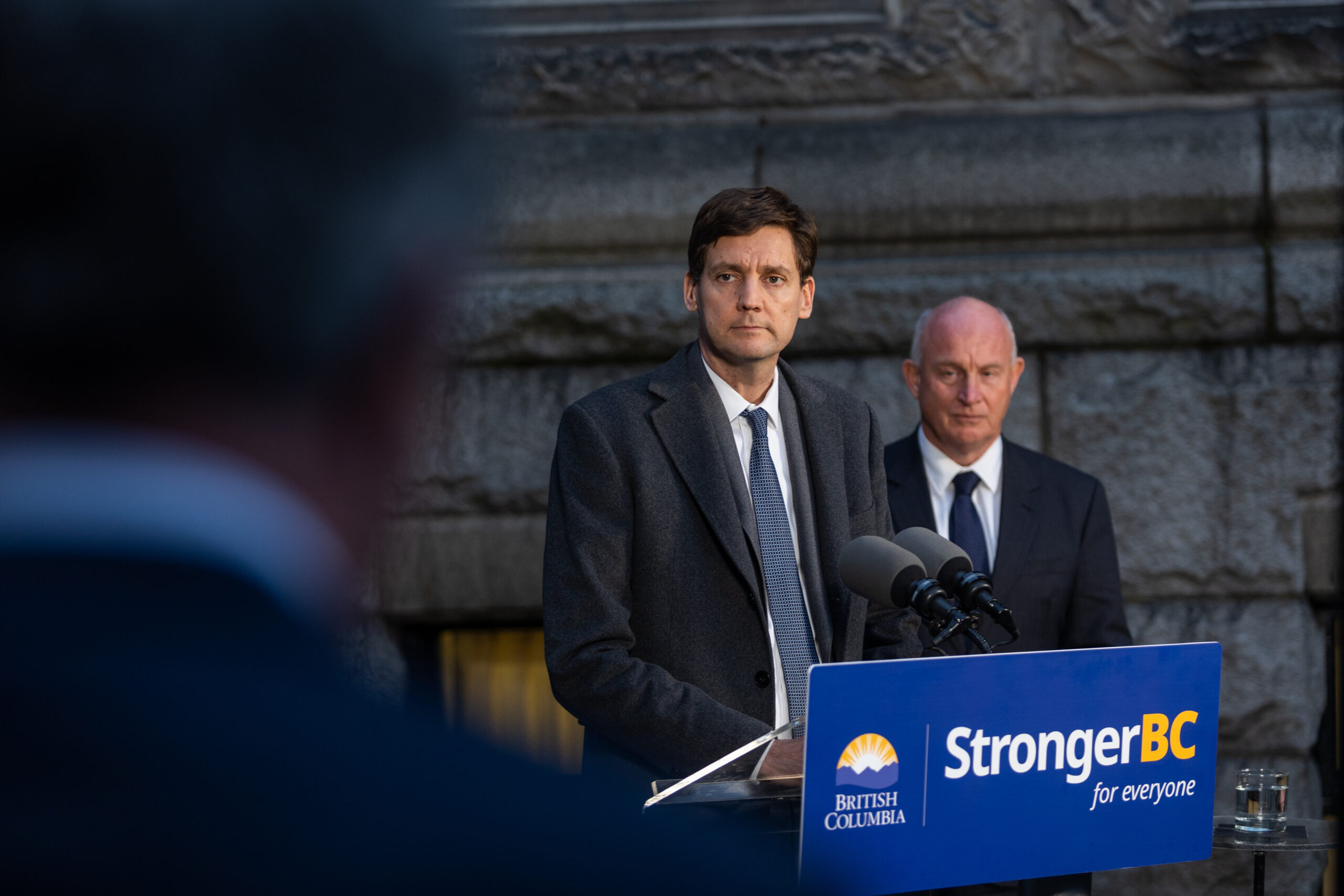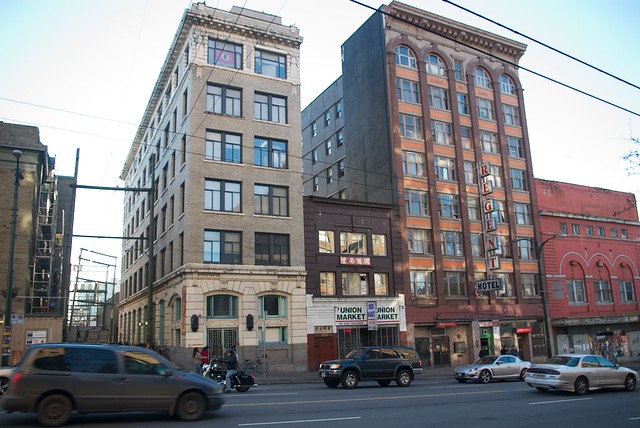There is a renewed grassroots effort to stop condo development on the site of the historic Pantages Theatre at 138 East Hastings. Worthington properties currently has plans to build 79 condo units on the site. The project may be approved by the Director of Planning, Brent Toderian later this summer unless there is a public outcry. In order to force a hearing, the public has until August 12 2011 to address concerns to:
Alice Kwan: 604.871.6283, alice.kwan@vancouver.ca and
Scott Barker: 604.873.7166, scott.barker@vancouver.ca
A coalition of community groups has launched a website called The DTES is not for condo developers, which includes a petition and outlines the coalition’s concerns about condo development in the “heart” of the Downtown Eastside. The 100 block of East Hastings includes many community assets that could be negatively affected by gentrification, including the Carnegie Community Centre, Insite, and 400 low-income housing units.
The coalition is calling on the City to reject the developer’s proposal, and asks “the Pantages owner to sell the property at its 2010 assessed value of $3.7 million to the City of Vancouver.” Worthington Properties bought the Pantages Theatre in 2004 for only $440,000. Worthington also purchased the adjacent lots, spending just over $1M to assemble the block for redevelopment. By 2010, the City assessed the value of the lots at $3.7M. But when Worthington Properties tried to sell the block to the City in the spring of 2010, the corporation asked for a price well above market value, and City Council turned down the offer at an in camera meeting on March 22, 2010.
The developer has made millions simply by speculating on an affordable block. Beyond that, they are now insisting on even more profits instead of working with the City to restore one of Vancouver’s three historic theaters, and to build desperately needed social housing. When the City makes every reasonable attempt to purchase a property to meet the ‘public interest’, but the owner won’t sell at a fair price, the City’s next legal step is expropriation. Under the provincial Expropriation Act, the City has the authority to expropriate properties to meet its policy goals in the public interest.
In the case of the Pantages block, the public interest objectives could not be stronger. The City currently holds a policy of “revitalization without displacement” in the Downtown Eastside, and the Homelessness Action Plan states that City needs 800 new units of social housing every year. The mayor was elected with a clear mandate to take action on housing and homelessness. Furthermore, there is a large organization of cultural and heritage groups interested in restoring the Pantages.
The Expropriation Act also ensures that the owner will be compensated at market price. An objective assessment is crucial, given that the owner has contracted his own assessment, which claims the value to be an unbelievable $8m.
Should the City choose to expropriate the property, here’s how that process would unfold:
The City would serve notice to the owner Worthington Properties that the Pantages lots are being expropriated, and that the owner will be compensated the market value of the land.
If the owner wishes to challenge the expropriation, a public hearing will be called within one month. At the public hearing, the owner can challenge the expropriation based on only two counts: 1) whether the City could better meet its project goals elsewhere, and 2) whether the City could meet its goals by taking a smaller chunk of the properties.
On the first count, it is unlikely that the City could preserve all or part of the Pantages Theatre better elsewhere. Also, stopping gentrification at this particular site is crucial for controlling speculation and rent increases in an already pressured low-income community.
On the second count, the City’s previous plans for redevelopment of the site included a restored theatre, as well as social housing. Such an ambitious development would likely require the entire block.
Note, the Expropriation Act makes it clear that the owner cannot challenge the City’s policy goals: “The necessity for the project or work for which the expropriation is sought must not be considered at the inquiry.”
The public hearing would also act as a forum for members of the community to outline the reasons for why expropriation is necessary, including: stopping gentrification and displacement; facilitating a more democratic redevelopment process for the block; sending a strong message to developers not to speculate in such vulnerable communities.
This latter point is crucial. Whereas City Council has, of late, rewarded firms that have speculated on Downtown Eastside properties with upzonings (free money), it is time to send a clear message that the inner-city is not a real-estate casino, where profits can be made at the expense of the existing community.
There are enumerable precedents of cities, including Vancouver, using their powers of expropriation to consolidate lands for the purposes of building public housing. A drastic example is, of course, the “urban renewal” of much of Strathcona from 1961-7: almost 30 acres were consolidated, and almost 2,000 people displaced.
In the 60s, the City used its power of expropriation to raze old buildings and construct public housing. But now the situation has been turned on its head. Developers are using the license of the free-market to raze entire blocks, ruthlessly, in order to displace the existing community. Now the City must use its powers of expropriation to stop neighbourhood demolition and displacement. The “freeway fight” to save Chinatown and the low-income community of the 60s has returned as the “free-market fight” to stop gentrification and save the low-income community.
Although it is common for planners and politicians to denounce the “freeway” plan of the 60s, one principle from that earlier time should be re-affirmed now more than ever: the political will to build public housing.















